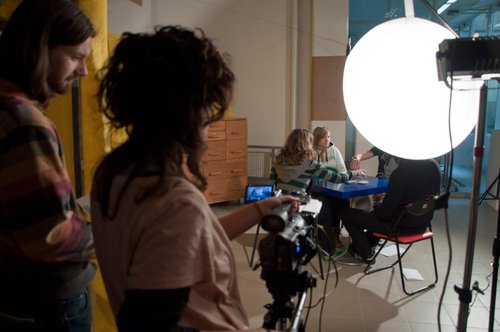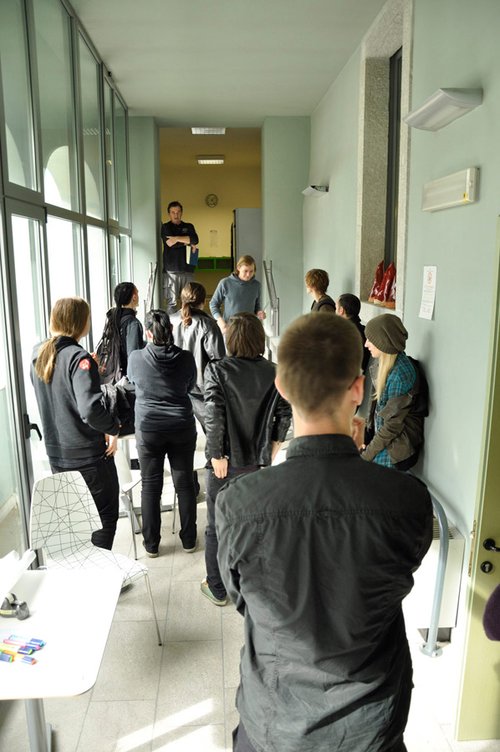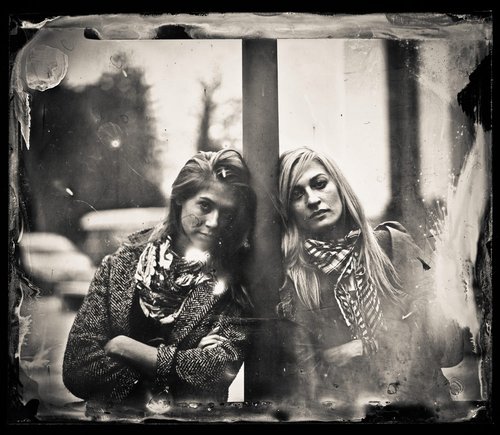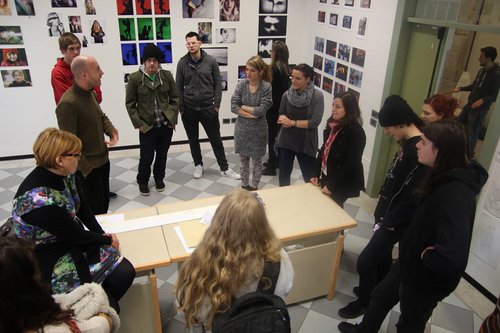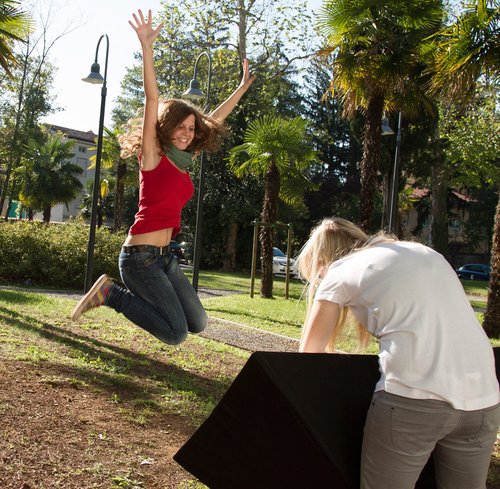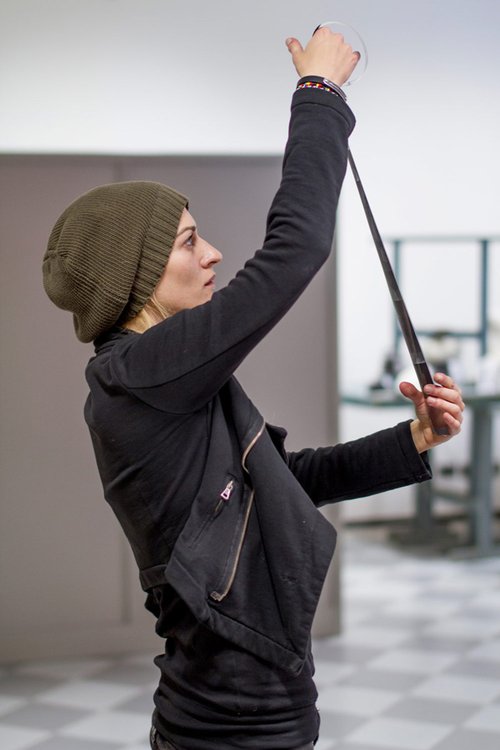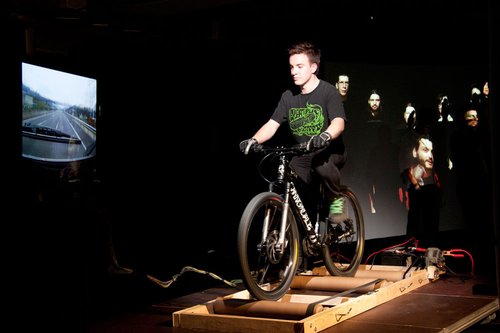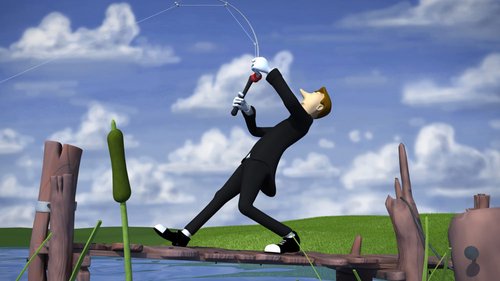Bachelor's programme in Digital Arts and Practices
| Study programme: | Bachelor's programme in Digital Arts and Practices |
|---|---|
| Main fields of study: | art |
| Programme code: | 1DUP |
| Programme cycle: | First cycle professional degree |
| Name of the qualification: | diploma |
| Qualification title: | diplomant digitalnih umetnosti in praks (VS) (equivalent to Bachelor of Applied Arts in Digital Arts and Practices) |
| Qualification abbreviation: | dipl. dig.um.pr. (VS) (equivalent to B.A.A. in Digital Arts and Practices) |
| Final examination: | no |
| Dean: | prof. Boštjan Potokar |
| Programme director: | prof. Rene Rusjan |
| ECTS coordinator: | prof. dr. Iztok Arčon |
Programme description
The Digital Arts and Practices programme has been developed in accordance with the principles of Bologna declaration and will be based on the three-year long Digital Media programme of Famul Stuart School of Applied Arts. The programme seeks a balance between diverse disciplines crossing their way in creative projects which characteristically use digital media and technologies. The programme shall also explore various uses of art in contemporary society in addition to the uses and implementation of creative practices in other disciplines, from sociological and humanistic to natural sciences. The programme will be structured around four main artistic modules and supported by historical/critical and technical modules.
Such structure enables combining different media and creative environments while the students can explore each media in their functional use and/or as independent creative means. Thus a broad field of future professions opens up: from authors (meaning an author of an artwork in its entirety, for example of an animated film or art installation, photo or web project) up to professional workers in interdisciplinary creative teams (creator of virtual spaces, creating animations or interactive applications for mobile phone industry, video reporter for web TV, documentary or product photographer, director of photography in a videofilm, layout artists, special effects animators, character animators, etc).
The Digital Arts and Practices programme enables, besides studying in four main modules, explorations in three diverse fields - film narration, creative industries and contemporary art - through alternative choices along with vertical and horizontal connections.
Duration and Credit System
The Bachelor of Arts in Digital Arts and Practices is a three-year long programme, the student accumulates 60 points each year, thus to finish the studies the student is required to have successfully completed all courses and other obligations as well as successfully presenting the graduation project; altogether at least 180 ECTS points. As the programme is ECTS based, it enables including the studies into the credit study system in Slovenia and Europe.
Career prospects
Graduates of the Digital Arts and Practices programme of the School of Arts are able to work in mass media (TV, internet, electronic in printed newspapers) and production houses, advertising agencies, architecture studios, galleries, museums, archives etc., in other words where there is a need for video production and postproduction, applied photography, graphic interfaces, animated film, animated graphics or where any of the above is used as secondary means of presentation. Some graduates with a distinctive individual creative potential also try their chances as contemporary audiovisual and new media artists, independent feature, documentary or animated film authors, photographers or multimedia artists.
Admission requirements
The admission requirements for the Digital Arts and Practices programme are:
- Matura, vocational matura or final examination after the completion of four-year secondary education programme or its equivalent in Slovenia or abroad;
- Proof of artistic ability for the Digital Arts and Practices programme.
Candidates who get at least 48 ECTS points from other study programmes which correspond at least in 70% with the course contents of the Digital Arts and practices programme accredited by the committee for student matters and successfully pass point 2 of admission requirements, will be able to inscribe directly into the second study year. Candidates who get at least 108 ECTS points from other study programmes which correspond at least in 70% with the course contents of the Digital Arts and practices programme accredited by the committee for student matters and pass point 2 of admission requirements, will be able to inscribe directly into the third study year.
If the number of students pre-registered for enrolment greatly exceeds the number of places available, admission will be limited. In selecting the candidates these points shall be taken into account:
- Proof of artistic ability: 90%
- Grade-point average of the matura, vocational matura or secondary school final examination: 5%
- Grade-point average of the 3rd and 4th year in secondary school: 5%
Proof of artistic ability includes:
- Portfolio (should illustrate the candidate’s talent as well as the level of knowledge of media and techniques), motivation letter with a biography (should show activity of the candidate in and outside of the chosen medium/media and uncover his/her motives in the choice of studies and professional way)
- Interview (we check the authorship of the submitted material and as well the candidate’s ability of comprehension and expressing his/her thoughts. After the interview, the candidate can be given an additional, creative task.)
Educational and professional goals
An essential goal of the study programme is to help the students develop into creative personalities who will act either as independent authors or members of creative teams; who will competently work in their specific chosen field but also have a high degree of broad knowledge and critical sensitivity in the world of contemporary technologies as well as art, information media and contemporary society.
Considering the fact that this is one of the fields where technologies are fast developing, a great emphasis will be given to stimulating the student’s mobility, self-initiative, critical view, using diverse sources of knowledge and furthermore to the student’s awareness of the importance of permanent education and independent learning. Moreover the school shall give its best to mediate expert knowledge that will enable the student to work successfully in the chosen field of creative work within digital arts and practices, facilitate his/her successful communication with experts of different profiles and develop a responsibility for their work towards themselves, their colleagues, their clients and the end users.
Access to further studies
Graduates are able to enter undergraduate programmes of the university type, post-graduate programmes leading to specialization, and other post-graduate programmes, according to the recommendations issued by the respective institution of higher education in the pre-enrolment announcement for undergraduate and post-graduate study programmes.
Assessment
- Modules with artistic contents: creative assignments and an exam, presentation of the project;
- Modules with technical contents: exercises and an exam;
- Modules with historical/critical contents; written or oral exam and seminar papers;
- The student finishes studies with defending his/her diploma thesis in front of a three-person committee.
Courses refresh
1. year
Module Carrying modules
| Compulsory courses | Hours | ECTS |
|---|---|---|
| 1 - Animation I | 60 | 6 |
| 2 - Videofilm I | 60 | 6 |
| 3 - Photography I | 60 | 6 |
| 4 - New media I | 60 | 6 |
Module Support modules
| Compulsory courses | Hours | ECTS |
|---|---|---|
| 5 - Digital Practicum I | 225 | 16 |
| 6 - Creative Practicum I | 120 | 8 |
Module General modules
| Compulsory courses | Hours | ECTS |
|---|---|---|
| 7 - Contemporary Art Practices I | 40 | 4 |
| 8 - History and Theory of Arts and Media I | 80 | 8 |
2. year
Module Carrying modules
| General elective courses | Hours | ECTS |
|---|---|---|
| 1 - Animation II | 120 | 14 |
| 2 - Videofilm II | 120 | 14 |
| 3 - Photography II | 120 | 14 |
| 4 - New media II | 120 | 14 |
Module Support modules
| Compulsory courses | Hours | ECTS |
|---|---|---|
| 5 - Digital Practicum II | 100 | 10 |
| 6 - Creative Practicum II | 100 | 8 |
| X - Selective Courses I | 100 | 8 |
Module General modules
| Compulsory courses | Hours | ECTS |
|---|---|---|
| 7 - Contemporary Art Practices II | 100 | 10 |
| 8 - History and Theory of Arts and Media II | 100 | 10 |
3. year
| Compulsory courses | Hours | ECTS |
|---|---|---|
| Diploma thesis | - | 16 |
Module Carrying modules
| Compulsory courses | Hours | ECTS |
|---|---|---|
| 10 - Videofilm III - D | - | 16 |
| 11 - Photography III - D | - | 16 |
| 12 - New Media III - D | - | 16 |
| 13 - Contemporary Art Practices III - D | - | 16 |
| 9 - Animation III - D | - | 16 |
| General elective courses | Hours | ECTS |
| 1 - Animation III | 50 | 4 |
| 2 - Videofilm III | 50 | 4 |
| 3 - Photography III | 50 | 4 |
| 4 - New media III | 50 | 4 |
| 7 - Contemporary Art Practices III/NM | 50 | 4 |
Module Support modules
| Compulsory courses | Hours | ECTS |
|---|---|---|
| 5 - Digital Practicum III | 75 | 6 |
| 6 - Creative Practicum III | 50 | 4 |
| X - Selective Courses II | 125 | 10 |
Module General modules
| Compulsory courses | Hours | ECTS |
|---|---|---|
| 7 - Contemporary Art Practices III | 80 | 10 |
| 8 - History and Theory of Arts and Media III | 70 | 10 |

